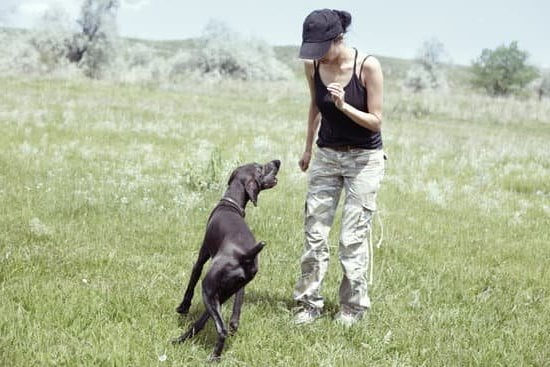Are you tired of being dragged around during walks by your exuberant canine companion? Or maybe you’ve struggled to regain control when your furry friend sees something exciting and starts pulling on the leash. If you can relate, then it’s time to address the issue of pulling on lead and learn how to train your dog to walk politely by your side.
Leash training is not only essential for the comfort and safety of both dogs and their owners but also plays a significant role in fostering a strong bond between them. Unfortunately, many pet parents struggle with this common problem, often resulting in frustration and even physical discomfort for them and their furry friends.
Before delving into specific training techniques, it’s crucial to dispel some common misconceptions about leash pulling. Contrary to popular belief, leash pulling is not merely an annoying behavior; it can actually impact a dog’s overall behavior and physical health. Dogs that consistently pull on the lead may become more reactive or fearful during walks, leading to anxiety issues. Furthermore, excessive pulling can strain joints and muscles over time, potentially causing long-term damage.
By addressing these concerns head-on and implementing effective training methods, you can teach your pup proper leash manners while strengthening the bond between you. In the upcoming sections, we will delve into various strategies and techniques to help you overcome the challenge of dog pulling on lead. So get ready to take control of those walks and enjoy stress-free strolls with your well-trained canine companion.
The Basics
Choosing the right leash and collar/harness is an essential step in addressing the problem of a dog pulling on lead. The type of equipment you use can greatly impact your training efforts and the comfort of your dog. When it comes to leashes, there are several options to consider, each with its own advantages and disadvantages.
One popular choice is a standard flat leash made from nylon or leather. These leashes are durable and provide good control over your dog. However, they may not be ideal for dogs that have a tendency to pull, as they do not offer much give or flexibility.
Another option is a retractable leash, which allows your dog more freedom to explore while still maintaining some control. Retractable leashes can be useful for well-trained dogs but may not be suitable for leash training purposes due to their lack of control.
When it comes to collars or harnesses, there are different styles available depending on the needs of your dog. For dogs that tend to pull or have neck issues, a harness is often a better choice than a collar.
A front-clip harness attaches the leash in the front, which helps discourage pulling by redirecting your dog’s forward motion. On the other hand, some dogs respond well to head halters or no-pull harnesses that utilize gentle pressure points to discourage pulling.
To make an informed decision about which leash and collar/harness combination is best for your dog, consider factors such as their size, breed characteristics, behavior issues, and any physical limitations they may have. It may be helpful to consult with a professional trainer or veterinarian who can provide guidance based on your specific situation.
| Type | Advantages | Disadvantages |
|---|---|---|
| Standard Flat Leash | Durable; provides good control | May not be ideal for dogs that pull; lacks flexibility |
| Retractable Leash | Allows more freedom for the dog; provides some control | Lack of control; may not be suitable for leash training purposes |
| Front-Clip Harness | Discourages pulling by redirecting forward motion | Might not fit well on all dogs; requires proper fitting and adjustment |
| Head Halter/No-Pull Harness | Gentle pressure points discourage pulling | Dogs may take time to adjust to wearing it; requires proper fitting and adjustment |
Establishing a Strong Foundation
Establishing a strong foundation and building a positive relationship with your dog is crucial for successful leash training. The bond between the dog and the owner sets the tone for effective communication and trust, making it easier to address any behavior issues, including pulling on lead. Here are some important points to consider when building a positive relationship with your dog:
- Trust and Communication: Trust forms the basis of any relationship, and your furry friend should have confidence in you as their leader. Building trust involves being consistent in your actions and words, meeting your dog’s needs, and providing a safe environment. Effective communication plays a vital role in understanding each other’s cues and signals. Interact with your dog using clear commands, body language, and positive reinforcement.
- Bonding Exercises: Engaging in bonding exercises helps foster trust, enhances the bond between you and your pet, and strengthens their obedience training. Activities such as playtime, grooming sessions, interactive games, or simply spending quality time together create a sense of companionship that contributes to better leash training outcomes.
- Positive Reinforcement: Rewarding desirable behaviors strengthens the connection between the dog and the owner while motivating the dog to repeat those behaviors. Use treats, praise, or toys as rewards when your dog exhibits good leash manners or responds correctly to cues during walks. Positive reinforcement not only reinforces good behavior but also helps build confidence in your pooch.
To establish a strong foundation and build a positive relationship with your dog before leash training, spend quality time together engaging in bonding exercises like grooming sessions or interactive games. Use positive reinforcement techniques to reward desirable behaviors during walks and also strengthen their obedience training overall.
Remember that every interaction with your furry friend can contribute to strengthening your bond and setting the stage for successful leash training experiences in the future.
Starting from Scratch
When it comes to leash training, it’s important to start with the basics. Teaching your dog basic leash manners lays the foundation for a pleasant walking experience and helps prevent pulling on lead. By following a step-by-step approach and using positive reinforcement techniques, you can train your dog to walk politely on a leash.
- Begin indoors or in a quiet, low-distraction area: Start by introducing your dog to the concept of walking on a leash in a controlled environment. Attach the leash to your dog’s collar or harness and let them get used to the sensation of having something attached to them.
- Focus on loose leash walking: The goal is for your dog to walk beside you with a slack leash, rather than pulling ahead. Hold the leash close to your body and start walking at a slow pace. If your dog starts pulling, stop immediately and stand still until they relax the tension on the leash. Then, continue walking. Reward your dog when they are walking calmly beside you with treats or verbal praise.
- Use cues and rewards: Introduce cue words such as “heel” or “walk,” which signal to your dog that it’s time to walk nicely on the leash. Pair these cues with rewards whenever your dog responds correctly. This positive reinforcement will help reinforce good behavior and encourage them to continue walking politely.
Remember, consistency is key when teaching basic leash manners, so practice these techniques regularly in different environments. Gradually increase distractions as your dog becomes more proficient at loose leash walking.
By focusing on teaching basic leash manners from the beginning, you’re setting both yourself and your furry friend up for success during walks.
The Power of Positive Reinforcement
Reward-based training methods are highly effective in teaching dogs to stop pulling on the lead. This section will discuss the benefits of using positive reinforcement techniques and how they can contribute to successful leash training.
Positive reinforcement involves rewarding desirable behaviors to encourage their repetition in the future. When it comes to leash training, this means rewarding your dog for walking calmly by your side or not pulling on the lead. By rewarding these behaviors, you are reinforcing that they are desirable and increasing the likelihood of them being repeated.
There are several advantages to using reward-based training methods for leash training. Firstly, it helps create a positive association with walking on a lead. Dogs who experience pleasant interactions and receive rewards during walks are more likely to view them as enjoyable experiences. This can improve their overall behavior and attitude during walks.
Additionally, positive reinforcement builds trust and strengthens the bond between you and your dog. When dogs understand that good behavior leads to rewards, they become more engaged and willing to cooperate. It also enhances communication between you and your dog since they will be more attentive and responsive when anticipating rewards.
To implement reward-based training methods effectively, it is important to clearly define what behaviors you want to reinforce and establish consistent rules. Rewards can include treats, praise, petting, or playtime, depending on what motivates your dog. Consistency is key – reinforce good behavior every time it occurs and avoid inadvertently rewarding unwanted behaviors.
By using positive reinforcement techniques, you can teach your dog alternative behaviors instead of pulling on the lead. For example, reward your dog for walking beside you with loose leash tension or paying attention to you when passing distractions such as other dogs or squirrels. With patience and consistency, reward-based training methods can help transform leash walks into enjoyable experiences for both you and your canine companion.
| Benefits of Positive Reinforcement |
|---|
| Creates a positive association with walking on a lead |
| Builds trust and strengthens the bond between you and your dog |
| Enhances communication and responsiveness from your dog |
| Teaches alternative behaviors to pulling on the lead |
Overcoming Challenges
One of the common challenges that dog owners face when leash training their dogs is dealing with pulling on lead. Pulling on the lead can make walks stressful and unpleasant for both the dog and the owner. However, there are strategies that can be implemented to overcome this challenge and teach a dog to walk politely on a leash.
To address pulling on lead, it is important to first identify the underlying causes of this behavior. Dogs may pull on the lead out of excitement, fear, or because they have not been properly trained to walk calmly beside their owners. Once the cause is identified, appropriate strategies can be put in place.
One effective strategy to address pulling on lead is teaching the dog self-control through impulse control exercises. These exercises help dogs learn to resist impulses and focus on their owner’s cues instead.
Simple exercises like “wait” or “leave it” can be practiced during walks by asking the dog to pause or stop every time they become overly excited or start pulling. By reinforcing calm behavior and rewarding the dog with treats or praise, they will begin to associate walking politely with positive experiences.
Another strategy to address pulling on lead is using appropriate training tools such as no-pull harnesses or head collars. These tools provide more control over your dog’s movement without causing discomfort.
For instance, a front-clip harness gently redirects your dog’s attention towards you when they pull, promoting loose leash walking. If using these tools, it is essential to introduce them gradually and pair them with positive reinforcement techniques so that your dog associates them with rewards rather than punishment.
By implementing these strategies and consistently working with your dog, you can overcome the challenge of pulling on lead and train your dog to walk calmly beside you during walks. It is important to remember that each dog is unique and may require different approaches during training, so patience and persistence are key while addressing this behavior.
Consistency and Persistence
The Importance of Consistency
Consistency is key when it comes to maintaining progress in leash training. Dogs thrive on routine and predictability, so it is essential to be consistent with the rules and expectations you establish during training sessions. This means using the same commands, gestures, and techniques consistently throughout the training process. When you are consistent, your dog will have a clear understanding of what is expected of them, which will help reinforce good behavior and prevent confusion.
In addition to being consistent with your commands and techniques, it is also important to be consistent with your expectations. For example, if you have been working on teaching your dog not to pull on the leash, it is crucial that you consistently enforce this rule during walks.
If you allow your dog to pull sometimes but not others, they will become confused about what behavior is acceptable. By consistently reinforcing the desired behavior (walking politely on a loose leash), you are setting your dog up for success in the long run.
Regular Training Sessions
Consistency goes hand in hand with regular training sessions. Just like any skill or behavior we want our dogs to learn, leash training requires practice and repetition. Set aside time each day for dedicated training sessions focused on reinforcing good leash manners. Aim for short but frequent sessions rather than one long session every few days.
During these sessions, be sure to incorporate both obedience exercises as well as actual walks to practice leash manners in real-life situations. This will help your dog generalize their learning and apply it consistently outside of training sessions.
Remember that consistency and persistence are equally important for both new behaviors you are trying to teach as well as maintaining previously learned behaviors. Leash training is an ongoing process that requires ongoing reinforcement, even after your dog has mastered basic skills. Make training a part of your daily routine to ensure continued progress.
Troubleshooting Setbacks
Leash training is not always a linear process, and setbacks are bound to happen. It is important to approach setbacks with patience and a problem-solving mindset. If your dog starts pulling on the leash again after making progress, don’t get discouraged. Instead, evaluate the situation and try to identify any potential triggers or underlying causes for their behavior.
Sometimes, changes in environment or routine can disrupt progress in leash training. If this happens, it may be helpful to go back to basics and reinforce the foundation skills you have already taught your dog. Additionally, consider seeking guidance from a professional dog trainer or behaviorist who can provide further insight and tailored strategies for addressing specific challenges.
Remember that consistency and persistence are key throughout the entire leash training journey. By continuing to practice and reinforce good leash manners, you will gradually see improvements over time. Stay patient, remain consistent with your efforts, and enjoy the rewarding experience of walking alongside a well-trained dog.
Going the Extra Mile
Advanced Exercises for Leash Training
Once your dog has mastered the basics of walking politely on a leash, you can take their training to the next level by incorporating advanced exercises. These exercises will further reinforce their leash manners and provide mental and physical stimulation during walks.
One such exercise is loose leash walking, where your dog learns to maintain a loose leash without pulling. To teach this, start by rewarding your dog for walking beside you with a loose leash. Use treats or toys as rewards and praise them for staying close to your side without tension on the leash. Gradually increase the duration of walking with a loose leash and gradually phase out the rewards.
Another advanced technique is heel work, which teaches your dog to walk attentively at your side with their nose in line with your leg. Start by having your dog sit next to you and then give a cue word like “heel” before taking a step forward. Reward them for maintaining the correct position at your side.
Increase the number of steps gradually, rewarding them for correct placement each time. Consistency is key in heel work, so be patient and practice regularly.
Lastly, practicing recalls while heeling can be an effective way to improve off-leash control during walks. With your dog walking obediently at your side, use a recall command like “come” or “here” while simultaneously guiding them toward you using body language or gesturing towards yourself. As they come towards you, reward them generously with treats or praise to reinforce the behavior.
Enrichment Activities during Leash Walks
Incorporating enrichment activities into your dog’s daily walks can help turn it into a mentally stimulating experience. This is especially important for high-energy dogs who may become bored easily during walks.
One enriching activity is nose work or scent games. Simply scatter small treats or hide them around the environment before starting your walk. Encourage your dog to use their nose to find the hidden treats, which not only keeps them mentally engaged but also channels their natural instincts.
Another enrichment activity is incorporating obedience commands into your walks. Practice basic commands like sit, stay, and down in different locations during your walk. Not only will this provide mental stimulation for your dog, but it also reinforces their training and obedience skills outside of a controlled environment.
Furthermore, consider adding some light agility exercises to challenge your dog physically and mentally. Set up small obstacles like cones or low jumps and guide your dog through them using commands and rewards. Agility exercises not only improve coordination but also strengthen the bond between you and your dog.
By incorporating these advanced techniques and enrichment activities into your leash training routine, you can continue to challenge and engage your dog during walks while reinforcing their good behavior. Remember to have patience, be consistent, and enjoy the journey of training with your furry companion.
Conclusion
In conclusion, leash pulling is a common issue that many dog owners face while walking their furry companions. However, with the right approach and consistent training, it is possible to train a dog to stop pulling on the lead and enjoy stress-free walks together. Starting with understanding the problem of leash pulling and the importance of leash training, we have explored various techniques and strategies to establish a strong foundation for leash manners.
By choosing the right leash and collar/harness, building a positive relationship based on trust and communication, teaching basic leash manners using positive reinforcement methods, and addressing challenges along the way, owners can make progress in their dog’s behavior. The power of consistency and persistence cannot be understated in maintaining progress in leash training. Regular training sessions and enforcing good behavior are key elements to ensure long-term success.
Furthermore, for those who want to go the extra mile in their leash training journey, advanced techniques such as loose leash walking, heel work, and heel recalls can be introduced. These exercises not only reinforce proper leash manners but also provide mental and physical stimulation during walks. It is important for owners to continue practicing these techniques regularly to solidify their dog’s understanding of appropriate behavior on the lead.
Ultimately, by following these guidelines and investing time and effort into leash training, you can enjoy stress-free walks with your well-trained dog. Remember to reflect on your progress along the way and celebrate small victories. With patience, consistency, and love for your furry friend, you can conquer leash pulling behaviors and create a harmonious walking experience that strengthens your bond with your beloved pet.
Frequently Asked Questions
How do I get my dog to stop pulling on the leash?
To get your dog to stop pulling on the leash, it’s important to use positive reinforcement and consistency. First, ensure that you have the right equipment, such as a well-fitted harness or a front-clip harness, which can discourage pulling. Start by teaching your dog basic obedience commands like “sit” and “stay” indoors before moving on to outdoor walks. When beginning a walk, establish clear rules by using simple commands like “heel” or “let’s go.”
Be patient and reward your dog with treats or praise when they walk calmly beside you without pulling. If your dog starts pulling again, stop walking immediately and stand still until they calm down. Consistency in these training methods will reinforce appropriate behavior over time.
How do I train my dog to walk on a leash without pulling?
Training your dog to walk on a leash without pulling requires patience and consistent practice. Begin by desensitizing them to the leash indoors, allowing them to sniff it and get used to its presence without any tension on it. Reward calm behavior around the leash with treats or praise. Once comfortable with the leash, start practicing walking in a controlled indoor environment before progressing to outdoor walks in low-distraction areas.
Use positive reinforcement whenever your dog walks calmly beside you without pulling, rewarding them with treats or verbal praise consistently. If they start pulling while outside, stop moving immediately until they relax and then continue walking once they are calm again. By gradually increasing distractions and duration of walks while maintaining consistent rewards for good behavior, your dog will learn not to pull.
How do I stop my leash pulling in 5 minutes?
While stopping leash-pulling completely within five minutes may be challenging, there are some techniques that can help address it quickly. One method is known as the “red light/green light” technique: whenever your dog begins to pull on the leash during a walk, stop immediately and stay still until they release tension from the leash by coming back towards you or sitting down calmly. Once this happens, reward them with treats or praise, and then continue walking.
By consistently applying this technique, your dog will learn that pulling doesn’t get them anywhere and that walking calmly and close to you is more rewarding. However, it’s important to note that each dog learns at their own pace, so commitment to regular training sessions and consistent reinforcement outside of the five-minute time frame will greatly increase the likelihood of success.

Welcome to the blog! I am a professional dog trainer and have been working with dogs for many years. In this blog, I will be discussing various topics related to dog training, including tips, tricks, and advice. I hope you find this information helpful and informative. Thanks for reading!





